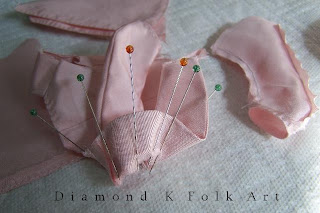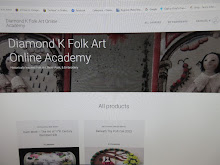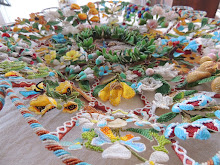Hazards of Summer never change...
 It is officially summer vacation here, the children out of school 2 weeks late due to the construction on their new school slowing things up a bit. They are all so excited, and we will be setting up the big pool this week, so , like every summer, I was giving Josh the lecture of what he can, and cannot do. As his eyes started to glaze over, a little book I have here at the Museum came to my mind. Seems things never change, and it is reassuring in a way, that the cycles of life and our habits stay basically the same over time. Hundreds of years could pass between generations, and yet, at the same time each summer, we both share common occurrences and rituals.
It is officially summer vacation here, the children out of school 2 weeks late due to the construction on their new school slowing things up a bit. They are all so excited, and we will be setting up the big pool this week, so , like every summer, I was giving Josh the lecture of what he can, and cannot do. As his eyes started to glaze over, a little book I have here at the Museum came to my mind. Seems things never change, and it is reassuring in a way, that the cycles of life and our habits stay basically the same over time. Hundreds of years could pass between generations, and yet, at the same time each summer, we both share common occurrences and rituals.
The little book I have, shown above, is a wondrous little children's book printed in 1834. Referred to as 'Chap books', they were published specifically for children. This is at a time when childhood as we all know it, was coming into itself~ no longer small adults, children were allowed to play and grow, physically, mentally and spiritually, before they actually reached 'adulthood'.
"Book of Accidents", as it is called, is a tiny 24 page book filled with stories aimed to instruct and teach a child what not to do. Each page is a different subject, or accident, and is complete with its own very graphic engraving of the consequences.
Pg. 19 reads:
"Boy Drowning."
A number of poor boys are drowned every year, from not being sensible of the danger of water. They go into ponds and rivers without knowing the depth, and by venturing too far, they sink to rise no more.
Boys should never bathe but in baths made for the purpose; or if they go into deep waters, never to bathe without being attended by those who can help them when necessary."




 It took me 42 hours of hand quilting to quilt this coat~ I used a precious baby pink silk taffy over a flannel lining for a smidge of loft
It took me 42 hours of hand quilting to quilt this coat~ I used a precious baby pink silk taffy over a flannel lining for a smidge of loft Spending so many hours on her coat, I didn't want to cover it all over with a dress or robe, so Ladye G is getting a jacket to match~ a reproduction c1720-40. This is the first sleeve being pinned in.
Spending so many hours on her coat, I didn't want to cover it all over with a dress or robe, so Ladye G is getting a jacket to match~ a reproduction c1720-40. This is the first sleeve being pinned in. I love to work with silk, but it does ravel, so all the seam allowances that are showing get overcast.
I love to work with silk, but it does ravel, so all the seam allowances that are showing get overcast. This is her basic jacket's bodice completed. The front flaps are faced, and awaiting to be joined with the skirting
This is her basic jacket's bodice completed. The front flaps are faced, and awaiting to be joined with the skirting I fit the pleats to her waist before fitting them to the jacket, to be sure they layed correctly
I fit the pleats to her waist before fitting them to the jacket, to be sure they layed correctly  Here is the back view of her new jacket. The hem of the skirting will have some wonderful trim, and the front will be laced over a stomacher....but that is left for us tomorrow.....
Here is the back view of her new jacket. The hem of the skirting will have some wonderful trim, and the front will be laced over a stomacher....but that is left for us tomorrow..... 
































